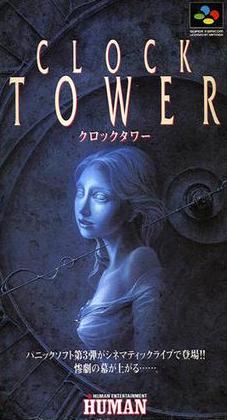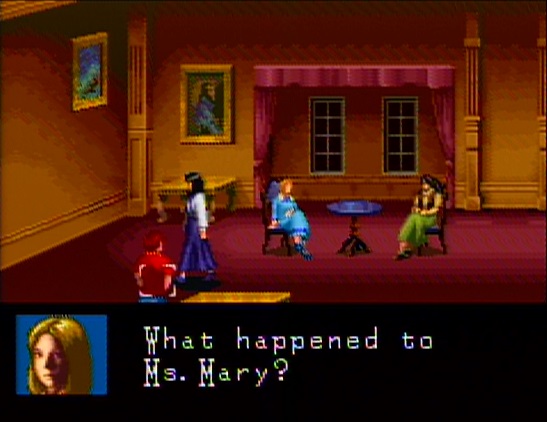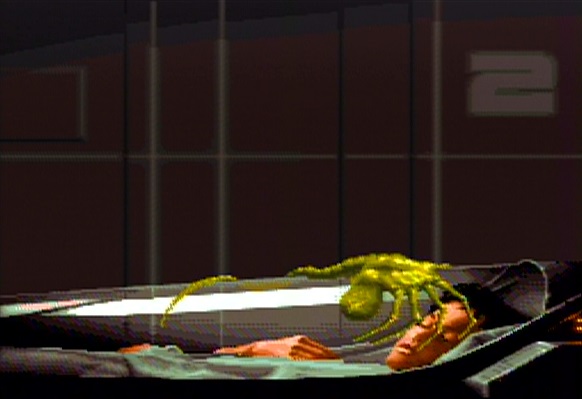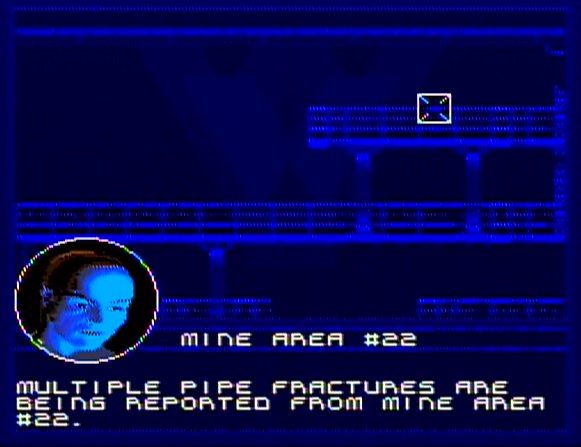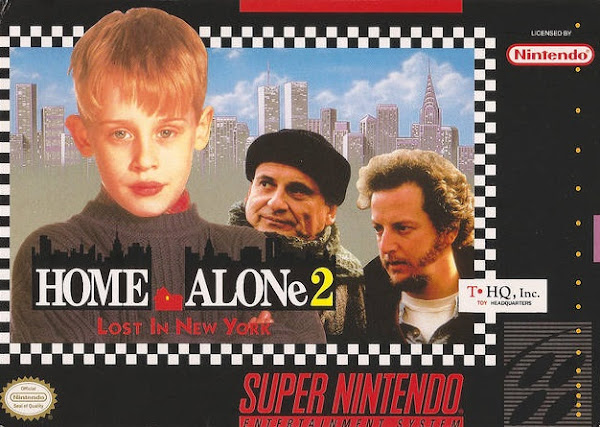
|
| Developed by Imagineering for the SNES and released in 1992 by THQ, Home Alone 2: Lost in New York adapts the film of the same name as a 2D platformer |
It is disingenuous to even call most of the movie video game adaptations of the 80's and 90's "hit-and-miss." A better description would be "abysmal-and-barely-playable." Just about every video game version of Home Alone 2: Lost in New York is abysmal. Thankfully, the SNES iteration transcends the abysmal to become the merely barely playable...barely.

|
| Hey, they kind of got the logo right! |
This game attempts to adapt the film of the same name, which tells the story of an 11-year-old named Kevin. Kevin boarded the wrong flight at the airport, was separated from his family, and has to make his way through New York City alone. He first stays at the Plaza Hotel, but his dad's credit card and most of his money are taken away by an overzealous hotel manager. The SNES adaptation starts out the moment Kevin is found out at the Plaza, and the game's opening screen gives the player roughly one second to run right, jump, and grab a necklace to throw at Tim Curry's hotel manager character...or they'll die. That's right, if you don't hit a button within the first second of Home Alone 2: Lost in New York for the SNES, you're killed. By Tim Curry.

|
| Take one more step and I'll make this necklace I picked up inexplicably fly out of my body and kill you |
In the movie, Kevin grabs some necklaces, rips off some beads, and throws them on the ground so that the bad guys will slip on them. In this game, if you find a necklace, you just throw it at a bad guy (or girl) and it kills them. There are limited items spread around each level, like a stun gun, or a toilet plunger gun (a gun that shoots a boxing first...I don't know what it's supposed to be), just like in the movie, wait, not just like in the movie, and you've got to shoot the bad guys. In this game, literally every adult is a bad guy you've got to kill or stun to get past.
 |
| Watch out, trench coat perv man, I've got a toilet plunger boxing fist thing gun, and I'm not afraid to use it!! |
What kind of bad guys will you face? In that first level, it's hotel employees, anthropomorphic vacuums, and mop buckets. In the next, where you're run off to a late night Central Park, it's thugs, rats, and bats. Just like in the movie...wait...not just like in the movie.
 |
| I also don't remember giant spiders or mountains of trash bags |
Home Alone 2 for the SNES isn't much of an adaptation of the film. It's also not much of a video game. It only moves past the abysmal and into the barely playable category for a few reasons. The first is that the game isn't horrible looking. Your 2D Kevin actually looks like Macaulay Culkin. 2D Tim Curry actually looks like Tim Curry. The levels themselves aren't breathtaking or anything, but they at least partially evoke the world of the film, which is more than I can say for the gameplay. Meanwhile, the music broaches the sacred realm of the tolerable. Not great, not even necessarily good, but you at least won't want to tear off your ears while playing.
 |
| Gimme all the money, granny, or the teddy bear gets it! |
As for the gameplay, Kevin's running and jumping mechanics are fine. However, enemy placement is fairly terrible, you'll often have no weapons with which to deal with them, and you'll rarely have any idea of what you're supposed to be doing. For instance, the game's first boss, the Plaza Hotel first-floor elevator, requires you to hit the up button on the elevator five times as living briefcases and I think couches dive toward you. Get up to the next floor, and you have to discern that once you get off the elevator, you've got to go down the hallway and enter and exit every room until you get to the end, then turn around, go back to the elevator, and hit the elevator button again.
 |
| Totally forgot there were apparently murderous chefs in the film, and now they are my favorite characters |
After facing smaller minion chefs, you'll eventually get to the level boss, who is, inexplicably, a large, nearly shirtless master chef, who is only vulnerable to your slide move, utilized by quickly tapping "down" while you're walking. Get through all of that insanity, make it to Central Park, die, get a game over, and you've got to start all over...from the opening Plaza Hotel screen. This game has no passwords or continues. Thankfully, you can earn extra lives by picking up pizza slices (make a whole pizza and you get an extra life), but unthankfully, the unwieldy level design ensures you'll die very often. The game is nowhere near fun enough to warrant trying over and over again, either. It's not even fun enough to warrant trying a few times.
 |
| Just kill me, guys, I don't want to play anymore |
Home Alone 2 for the SNES is the type of game you would have only played through because it was your only option, you had a lot of time to play, and nothing else to do. In today's world, even with astronomical inflation compared to 1992, you can choose from thousands of indie or classic games on a digital platform that cost less than ten bucks and are massively more fun than Home Alone 2. In 1992, Home Alone 2 was $70 from Toys 'R Us and probably the only game you'd have continuous access to for months if you bought or were given it. Then again, you actually owned a game back then, even if it was a piece of crap. Stalemate, 1992/2022. Either way, there had to have been a better way to adapt Home Alone 2: Lost In New York for the SNES.








